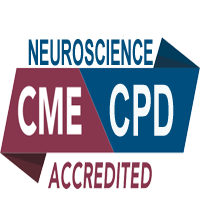
Jesse Weinberger
Mount Sinai School of Medicine, USA
Title: AORTIC ARCH PLAQUE – Mechanism of Atherothrombotic Stroke
Biography
Biography: Jesse Weinberger
Abstract
Aortic arch plaque (AAP) is associated with stroke and is a potential embolic source. Amarenco reported an increase of recurrent stroke in patients with complex (AAP) plaques >4mm thickness compared to simple plaques. Plaque heterogeneity and mobility play a role. We developed a noninvasive method to image AAP with B-mode sonography through the supraclavicular fossa to determine whether AAP is an etiology of stroke. B-mode correlation with transesophageal echocardiography (TEE) in 37 patients showed 93.75% sensitivity, 80.95% specifiticy, 78.95% positive predictive value and 94.40% negative predictive value. In 500 consecutive patients referred for carotid duplex, the arch was visualized completely in 468, partially in 27 and not visualized in 15. Complex plaques were seen in 40 symptomatic patients and 64 asymptomatic patients, simple plaques in 131 symptomatic patients and 260 asymptomatic patients, difference not significant. Excluding patients with ipsilateral carotid stenosis and atrial fibrillation, complex plaques were seen in 24 symptomatic patients and 31 asymptomatic patients, simple plaques in 90 symptomatic patients and 188 asymptomatic patients, p = 0.075. Among patients with complex plaques, 19 heterogeneous plaques were symptomatic and 15 asymptomatic, 21 patients with homogeneous plaques were symptomatic and 46 asymptomatic p=0.037. One hundred sequential studies in 89 patients over 18 months were performed to measure a change >0.5mm. For 46 simple plaques, 77% had no growth, 10% regressed and 13% progressed. For 27 complex plaques 48% had no growth, 38% regressed and 14% progressed. Intimal thickness of AAP in 504 patients correlated linearly with presence of coronary artery disease r=0.97, p<0.001 (0-1mm 16%, 1-2mm 38%, 2-3mm 56%, 3-4mm 58%, 4-5mm 79%, 5-6mm 89%). CONCLUSIONS: Aortic arch plaques are relatively stable. High risk aortic arch plaques are associated with heterogeneous morphology. Complex AAP are associated with generalized atherosclerosis including coronary artery disease. Sequential noninvasive imaging of AAP can have value in future studies of therapy to prevent stroke from AAP. The proposed mechanism of embolism from carotid and aortic arch plaque is plaque rupture. Ultrasound videos of carotid and aortic arch plaque rupture in acute stroke patients will be shown.

